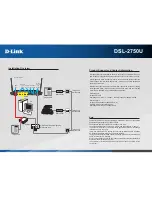
Wirnet iBTS
Document title : Installation and
Maintenance Manual
Version : 2.0
Author : SNI
Date : 04/12/2018
Classification
This document is the strict property of Kerlink and shall not be either copied nor sent without express
written authorization of Kerlink
Internal Use
Kerlink m2m technologies reserved rights
Confidential
Kerlink – 1 rue Jacqueline Auriol – 35235 THORIGNÉ-FOUILLARD
Page 145 / 221
Strict confidential
3.
Key parameters to optimize the radio performance
The installation site is very important and can determinate the coverage area of the Wirnet
iBTS. Some keys points are detailed hereafter. They are general rules that must be
considered in every installation.
However, each individual installation is a particular case with specific constraints and
sometimes with unexpected interferers. The proximity of other emitters, bad electrical
installations may cause desensitization of the LoRa receiver.
KERLINK recommends performing spectrum analysis to validate the choice of the installation
site. This analysis can be completed with a portable spectrum analyzer for instance.
The Wirnet iBTS has also the optional ability to perform spectrum analysis through the
Wanesy Management Center (WMC), if the customer has subscribed to this service. This
analysis is however only possible once the installation is completed. Please contact Kerlink
for more information on this service.
3.1
Height of the site
A key factor to have an optimized Wirnet iBTS reception is the height of installation site and
moreover the height of the LoRa antenna. The Wirnet iBTS gateway must be installed as high
as possible to have the better reception and wider coverage area.
The figure below shows the RSSI of the signal (dBm) vs. the distance to the end point
(meters) vs. the height of the Wirnet iBTS (4m, 8m, 12m and 30m). Two uses cases are
presented: one for a small city configuration (urban area) and one for countryside area.
The propagation model used is based on Hata model.
The frequency is 868MHz in this case but performance and conclusions at 915MHz would be
almost identical. The RSSI is the received signal by the Wirnet iBTS. The end point EIRP is
assumed to be 25mW. The height of the end point is 1m.
















































